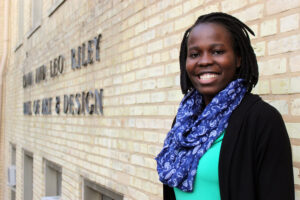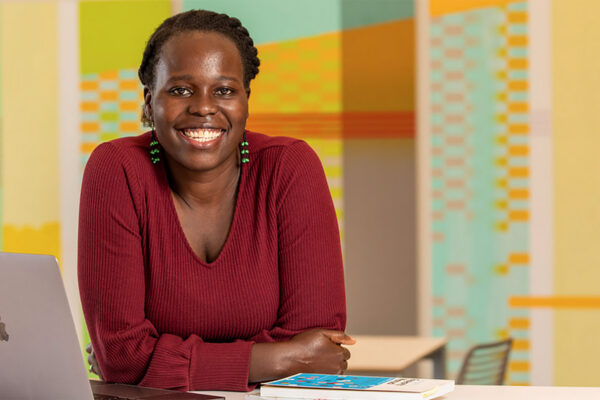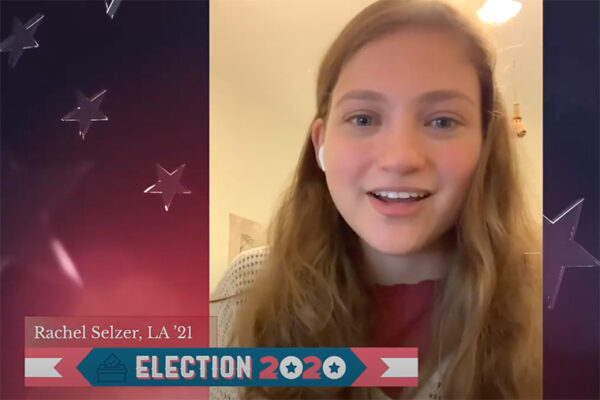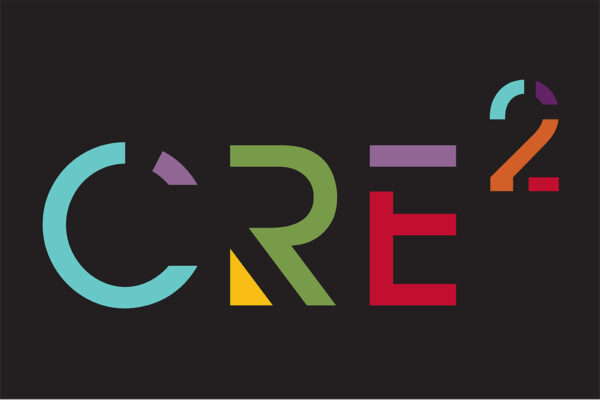Law and graphic design. Not necessarily two disciplines one thinks of as being related. But a new class at Washington University in St. Louis is using concepts from each to help students wrestle with the challenges of race, place and inequality.
“Examining Law, Race, and Design: A St. Louis Story” is being co-taught this semester by John Inazu, the Sally D. Danforth Professor of Law and Religion in the School of Law, and Penina Laker, assistant professor of communication design in the Sam Fox School of Design and Visual Arts.
“Even as Washington University and other schools have transitioned to online-only teaching for the rest of the semester, this course on design is about finding creative solutions in the midst of constraints, and that’s exactly what we’ll keep on doing,” Laker said.
“The idea for the class started when I noticed how many important legal decisions arise out of St. Louis and began to think about the relationship of place and locality to those decisions,” Inazu said. “It soon became clear that most of the key decisions also involved race.”Inazu knew Laker from their participation with the Carver Project in St. Louis and knew she was involved in local outreach and activism around issues of race and place through her work as a graphic designer.
“Knowing that the university supports collaborative interdisciplinary teaching, I pitched the idea of the class to her and she was enthusiastic to give it a try,” he said. “A few conversations later, we had the basic outline for our course.”

The course is part of the university’s Beyond Boundaries program, directed by Rob Morgan, teaching professor of drama in Arts & Sciences, which allows students to enter the university unaffiliated with any one school, freeing them to address challenges that do not reside within the territory of a single discipline.
“Most people give me a puzzled look when I tell them I’m co-teaching a class with a graphic designer,” Inazu said. “But even if it’s not obvious at first glance, there are important connections. We may think of law as mostly rules and design as mostly creativity, but both law and design require a blend of rules and creativity. And both law and design involve good storytelling.”
Laker agrees. “Despite the fact that we don’t normally see these two disciplines intersect or cross paths, it actually makes a lot of sense that they do,” she said. “At the core of both law and design is service to human beings; they interact with products, spaces, services, experiences and policies developed by designers and lawyers. Despite a difference in methodology used to arrive at said deliverables, designers and lawyers both play an important role in shaping the lived experiences of people.”
From Dred Scott to Ferguson, St. Louis has a complicated history with race and equality, and law has played an important role in those developments, the course syllabus states. But law is more than words on a paper. Using human-centered design, the course challenges students to connect the words of legal documents with the experiences of those whose lives are shaped by them.

“The course offers a unique opportunity for students to witness how both disciplines act in service of each other,” Laker said. “Seeing that this class is providing a new lens through which students might understand the city where they live and go to school, I hope they can walk away more inquisitive about the complicated historical narratives that have gone on to shape a large majority of the systemic issues we see in St. Louis.”
“The combination of law and design helps bring into context two topics that are challenging in two completely different ways,” said Harrison Tanaka, a freshman in the Olin Business School. “Instead of simply thinking law is a set of facts, law can be thought of as a carefully designed story given a certain set of facts and context.
‘The combination of law and design helps bring into context two topics that are challenging in two completely different ways.’
Harrison Tanaka
“Design also helps make law come to life as design helps us to better understand the people, places and perspectives that are represented beyond the paper. The course leverages the different strengths of these fields by bringing them together deliberately through way of discussion, lectures, group projects, experts in different fields and collaborative design activities,” Tanaka said.
Inazu and Laker want students to wrestle with the challenge of learning not one but two new “languages” at the same time.
“As first-year undergraduates, most of them have very little background in law or design,” Inazu said. “It would be complex enough to tackle an introductory course in one or the other, and we are bombarding them with two different fields and asking them to find relationships between the two. That’s no small task. And focusing on the crucial issues of race and place at this intersection further heightens the challenge.”


